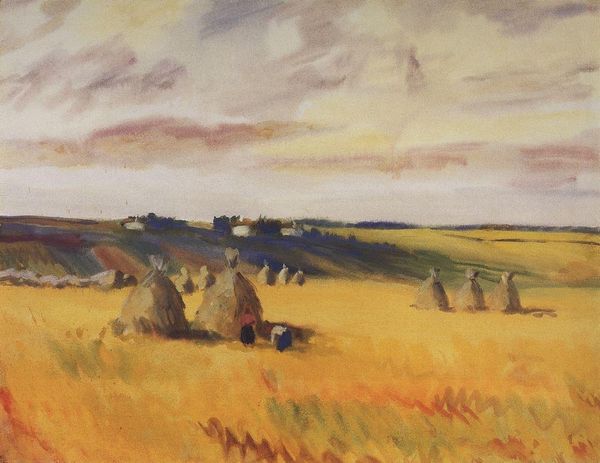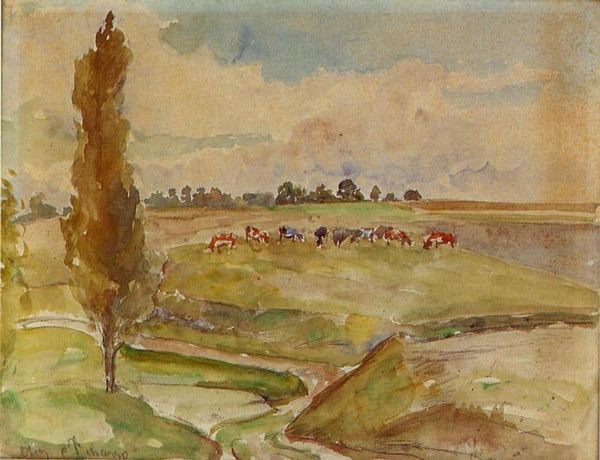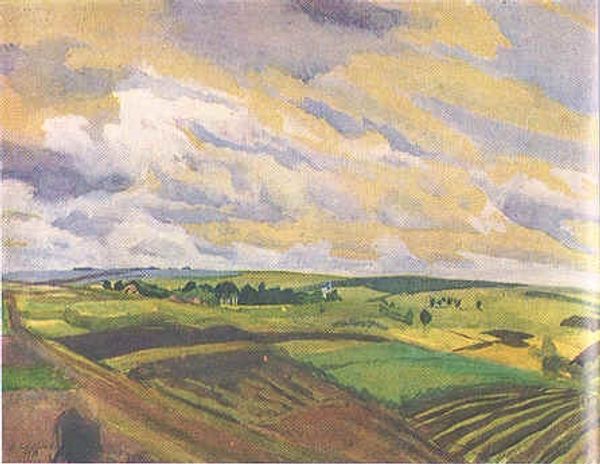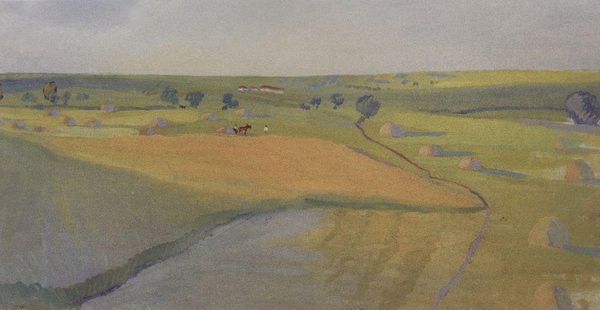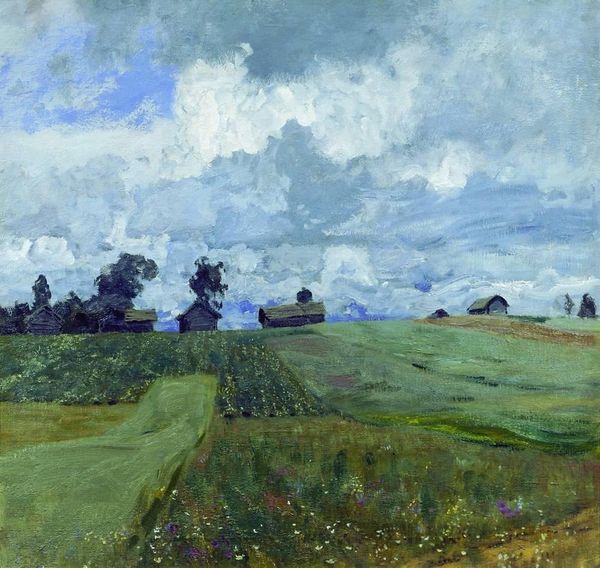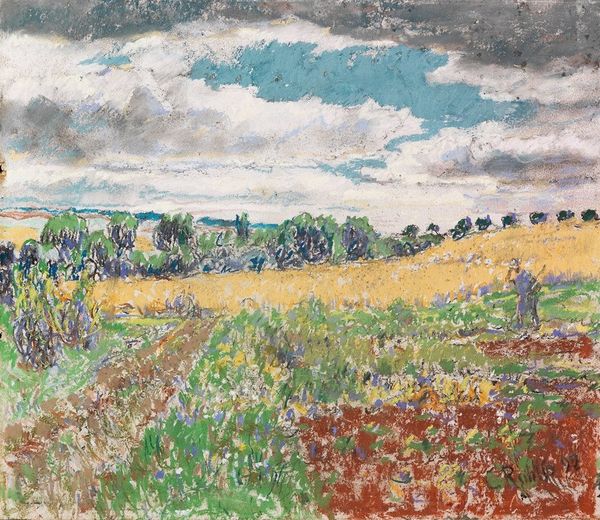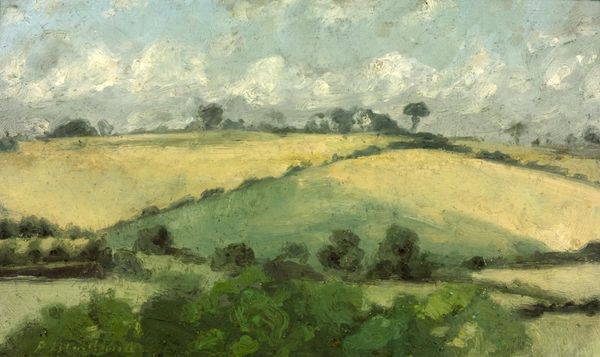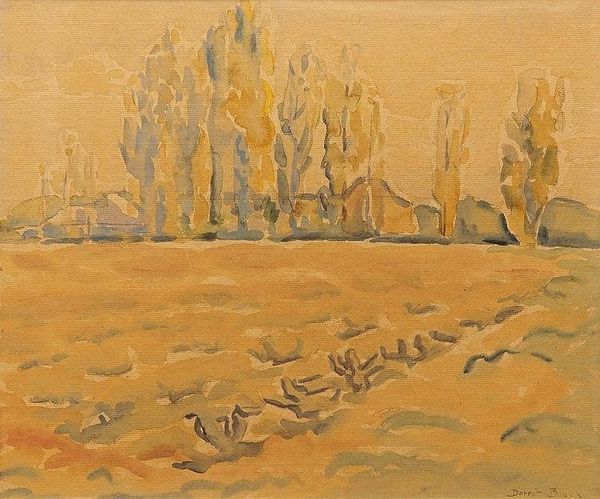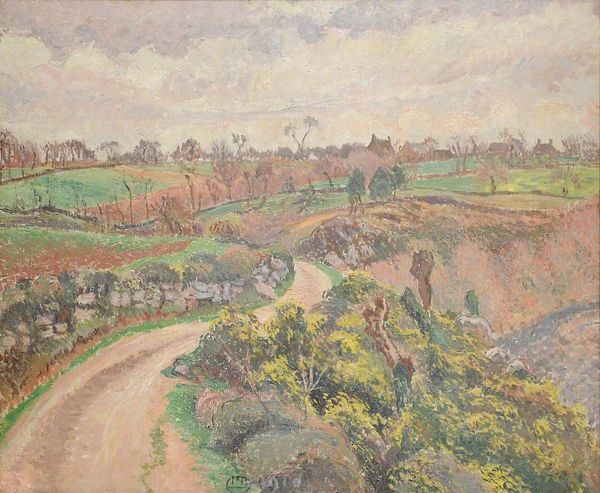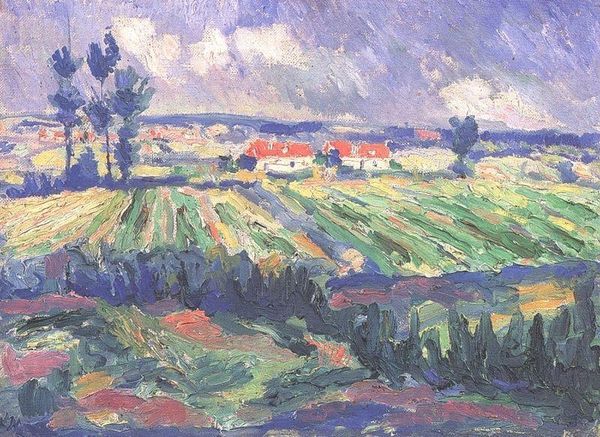
Copyright: Public domain US
Editor: This watercolor on paper, “Autumn,” painted around 1910 by Zinaida Serebriakova, captures a landscape dominated by sunflowers. I'm struck by the almost hazy, dreamlike quality of the scene, the sunflowers seeming to blend into the landscape itself. What stands out to you in this work? Curator: Well, first off, sunflowers themselves are potent symbols, aren’t they? They’re about adoration, warmth, and longevity. But here, they also speak to something deeply rooted, a connection to the land and a cycle of growth, death, and rebirth. Notice how the sunflowers in the foreground seem to almost block our view, while the small houses peek out from behind. What do those dwellings represent to you in the painting’s broader symbolic vocabulary? Editor: They feel… distant, almost idealized. Like a memory of a simpler, perhaps rural life? Curator: Exactly. Serebriakova’s work often touches upon memory, and these sunflowers act almost as a screen or a veil, separating us from that idealized past. Think about the color palette, too. Those muted yellows and browns suggest the decline of the growing season, while simultaneously embodying feelings of nostalgia. What emotion does that provoke? Editor: A bittersweet longing, perhaps? It feels very tender. Curator: It does. The sunflower itself embodies warmth, hope, and vitality, which counter the sorrow with an indication of perseverance, longevity and memory, which remains despite harsh seasons and other difficulties. I wonder how her experiences shaped how she visualized memory in a work like this? Editor: I hadn’t thought about it that way. Now I see how the sunflowers aren't just pretty flowers, but also stand for cycles of life and the endurance of memory. Thank you. Curator: My pleasure. It is always rewarding to contemplate how personal experience manifests through collective memory and symbology.
Comments
No comments
Be the first to comment and join the conversation on the ultimate creative platform.
